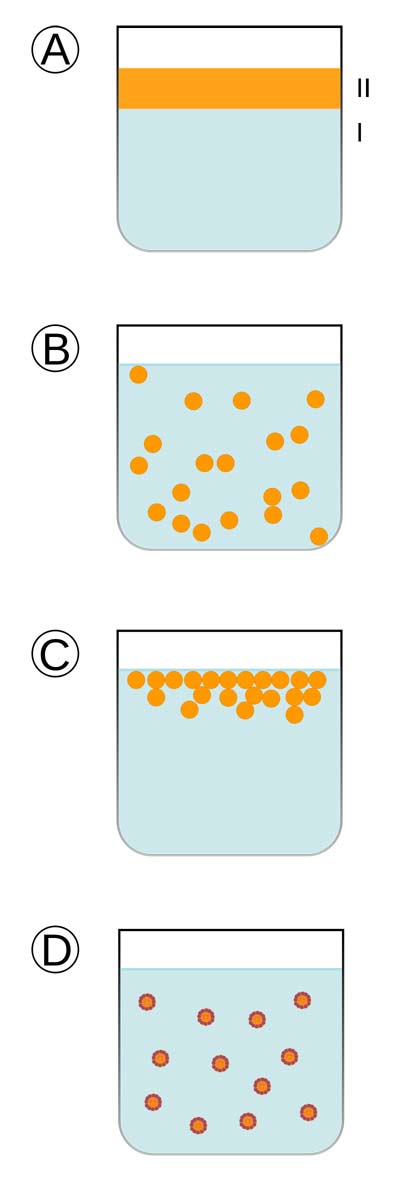emulsion

(A) Two immiscible liquids, not yet emulsified. (B) An emulsion of Phase II dispersed in Phase I. (C) The unstable emulsion progressively separates. (D) The surfactant (outline around particles) positions itself on the interfaces between Phase II and Phase I, stabilizing the emulsion.
An emulsion is a suspension of one liquid in another. For example, when a water-based paint is diluted, the paint forms an emulsion with the water. It does not dissolve in the water, but is dispersed into very fine droplets or particles which take an extremely long time to settle out. An emulsifying agent will stabilize the dispersed particles.
Fats can form emulsions with water. During digestion, salts from the bile pass into the gut and act on the fats there, reducing their surface tension so that they can form smaller droplets – an emulsion.


